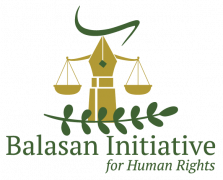Israeli authorities have recently designated a jurisdictional order for the establishment of the Nahal Heletz settlement near Bethlehem[1], along with 4 other new settlements across the West Bank. This decision marks a critical and alarming development for the Palestinian territories, affecting all the suburbs of the Bethlehem area but particularly Al-Makhrour Valley and Battir, the last remaining green areas in Bethlehem as a result of Israel’s relentless settlement policy.
This new settlement, strategically positioned to disrupt Palestinian territorial continuity, poses significant threats to the land, heritage, and lives of the local Palestinian communities.
The small jurisdictional area of 120 dunams designated for Nahal Heletz contradicts basic planning principles, revealing the political motivations behind its establishment. The settlement’s primary purpose is to obstruct Palestinian territorial continuity and exacerbate the land confiscation for further pushing the disposition of Palestinians from their lands, rather than to meet any so-called ‘developmental needs’.
Al-Makhrour Valley, part of a UNESCO World Heritage site under danger, is renowned for its ancient and unique traditional agricultural practices. The decision to designate the area for the new settlement stands in stark contradiction to its conservation status, undermining the efforts to preserve this vital cultural and natural heritage. The Israeli government’s double standards are evident, as they condemn Palestinian construction within the so-called “Conservation Area” for environmental reasons while simultaneously planning to build a settlement within this zone. Such orders of land confiscation and settlement construction inside the occupied territory are not only a clear violation of international law, namely international humanitarian law, international human rights law and the Rome Statute, which are all applicable to the occupied Palestinian territory, but also, equally gravely, they threaten the ecological balance and the agricultural practices that have sustained Palestinian communities for generations given that Al-Makhrour valley is the last green area in Bethlehem[2].
Battir, a village known for its historic terraces and water systems, will face severe repercussions from the establishment of Nahal Heletz Settlement. The proximity of the new settlement—merely 250 meters from Area B under Palestinian Authority control and as close as 30-50 meters from some homes in Battir—illustrates the imminent threat to the village’s infrastructure and daily life. The encroachment on private Palestinian lands, without any legal and administrative processes, underscores a blatant disregard for Palestinian property rights and seeks to forcibly transfer Palestinian communities from their lands.
The establishment of this settlement is a deliberate move to create a long-intended, contiguous block of Israeli settlements from Gush Etzion to Jerusalem. This effectively severs the connection of Palestinian villages west of Bethlehem to the city, isolating them into enclaves within Israeli-controlled territory. It also will absolutely contribute to isolating the Bethlehem area from the Western areas leading to Hebron and other nearby places. Besides severing Palestinians’ access to their lands, and their last remaining green areas, such jurisdictions disrupt the social, economic, and cultural fabric of the Palestinian communities, leaving them deprived of their fundamental rights. The isolation of villages like Battir and Al-Makhrour from Bethlehem will hinder rural economies, access to essential services, and movement, exacerbating the already stark situation that Palestinians face in these areas, classified as Areas C and under exclusive Israeli control.
This new settlement, one of 4 others, comes in a context of deliberate escalation by the Israeli government in response to international recognition of the State of Palestine, as Minister Smotrich has openly announced[3]. This order falls in line with Israeli policies that seek to exploit the ongoing genocide in Gaza to further push annexation in the West Bank in an irreversible manner. The aftermath of October 7th has precipitated an unprecedented surge in Israeli aggression in the West Bank, escalating an already dire situation. This aggression manifests in various forms, including archaeological colonization[4], land confiscation, and settlement expansion, to which Bethlehem has been largely exposed and is losing its green areas as a result of.
[1] PEACE NOW, “Israeli Government Sets Jurisdiction for New Settlement Near Bethlehem”, July 2024. https://peacenow.org.il/en/israeli-government-sets-jurisdiction-for-new-settlement-near-bethlehem
[2] Read the Balasan’s report on Al-Makhrour Valley for more information about the illegal occupation of the valley https://balasan.org/annexing-the-land-of-grapes-and-vines-case-study-of-al-makhrour-valley/
[3] Anadolu Ajansi, “Israeli Finance Minister Threatens to Build New Settlements for Each Country Recognizing Palestine”. https://www.aa.com.tr/en/middle-east/israeli-finance-minister-threatens-to-build-new-settlements-for-eachcountry-recognizing-palestine/3263162#:~:text=Smotrich%2C%20who%20heads%20the%20extremist,of%20Palestine%20as%20a%20state
[4] Read the Balasan’s Update on “Mount Herodium” as An Example: https://balasan.org/judaization-of-bethlehem-archaeology-in-service-of-annexation-the-case-of-mount-her odium/
